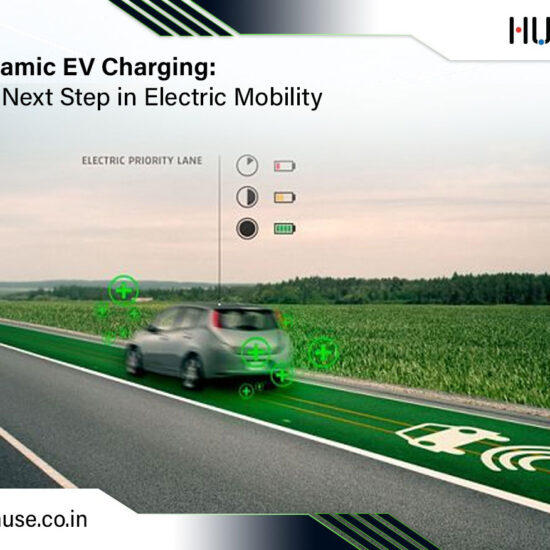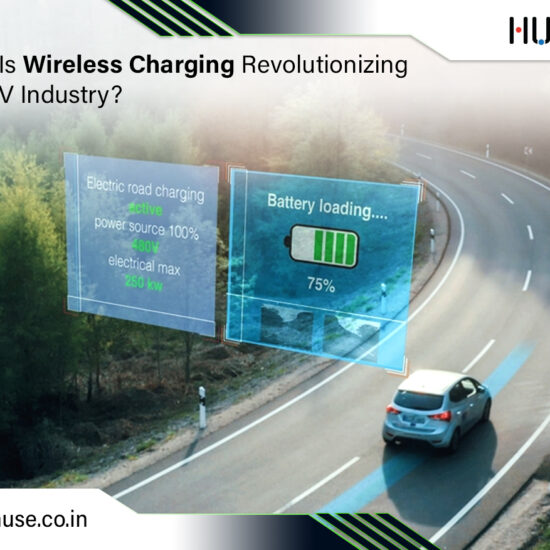For those with wireless charging in their phones, it’s difficult to wonder how they survived without it for so long. When it comes to ease of plugging in and usage, wireless charging can’t be beat.
Now, imagine the same convenience for your vehicle. Yes, wireless charging for electric vehicles is a thing, and it’s set to change EV charging forever. Although they’re currently limited to Europe and some parts of Asia, it’s not far-fetched to say that wireless electric charger will become a staple in the next decade.
In this piece, we’ll discover how wireless charging roads work and their many benefits. Read on!
How Wireless Electric Charger for Electric Vehicles Works
Similar to your phone, a wireless electric charger for your EV uses resonant electromagnetic induction (EMI) to transfer electric current. This process is known as inductive charging, and it uses the recever coil under the chassis of the vehicle to receive the charge from the transmitter placed underneath the surface of the road.
It works the same way in the case of wireless charging roads. A charging request is sent by the EV to the charging assembly, upon accepting which, charge is sent to the vehicle’s receiver.
The whole setup is divided into 4 parts:
- Management Unit
- Control Unit
- Receiver
- Coil segment
The receiver and the control unit are present inside the vehicle, whereas the management unit and coil segment are part of the charging assembly.
Basically, the EV sends a charging request to the management unit, which, under the right circumstances, accepts the request and sends the power to the receiver.
The whole takes place in six steps.
- When charging is required, the vehicle’s ECU sends the control unit a request.
- The control unit, in turn, sends out the charging request to the coil segment over which the vehicle is parked.
- The coil segment relays the request to the management unit.
- The management unit validates the charging request.
- The coil segment then transfers the power to the EV’s receiver via electromagnetic induction.
- The receiver then transfers the power to the control unit, which forwards it to the EV’s battery.
It’s considered as fast and efficient as wired charging. For most plugs, the efficiency lies between 80% and 95%. Today, there are wireless EV chargers that deliver up to 93% efficiency.
As for the charging speeds, wireless EV chargers deliver up to 20kW of power. Essentially, it’s a level 2 charging speed, and there’s no technological bottleneck preventing higher power delivery and speeds.
Benefits of Wireless Charging Roads for Electric Vehicles
Here are some of the convenient benefits of wireless charging roads:
Urban Planning and Aesthetics
Without charging stations sticking out in the landscape, urban spaces can be better managed, kept cleaner, and more attractive. The charging infrastructure can easily blend in the existing infrastructural elements like streets, parking lots, and petrol pumps, improving function without altering form.
Convenience
The best part about wireless electric charger is, of course, the convenience it offers. You only need to park your car over the charging pad to get your battery juiced up. You no longer have to deal with connectors, plugs, and cords to charge their EVs.
Increased Efficiency
Compared to wired charging methods, wireless charging roads is highly efficient when it comes to minimizing power losses during the charging process. This allows for faster charging speeds and also the overall sustainability associated with electric mobility.
Wrapping Up
Given the convenience, speed, efficiency, and sustainability of wireless charging systems, it’s bound to replace conventional wired charging in the future.
In collaboration with Electreon, HUSE has pioneered the future of electric mobility in the form of commercial wireless bus charging terminals for simple, innovative, and driver-independent charging functions.We at HUSE don’t just provide a service, we have made a cleaner, greener, and sustainable future a centre of all our offerings, which is reflected in our safe and efficient wireless electric chargers for EVs. With our charging systems, you don’t have to worry about range, costs, and battery capacity.
FAQs On Wireless Electric Charging Roads
How does wireless charging roads works?
wireless electric charger are integrated into roads to allow electric vehicles to charge while driving or being parked. This technology involves deployment of coils under the road surface that works on the principle of AC magnetic induction charge transfer. Vehicles equipped with our receivers can accept this transfer of power, converted to pure electricity anf current for the vehicle's battry. Wireless charging roads enable efficient charging without the need to stop, therefore enhancing convenience and saving time and money, all while extending vehicle range.
Is it safe to Wireless electric charger?
Using a wireless electric charger completely safe .Our collective collaboration with electron ensures, ensure that all our wireless charging roads adhere to all regulatory standards and guidelines. Our systems are designed with eco-conscious materials and utilize advanced technology that not only optimizes energy efficiency but also minimizes any potential hazards, making them a secure choice for businesses and EV owners.
Is it safe to Wireless electric charger?
Using a wireless electric charger completely safe .Our collective collaboration with electron ensures, ensure that all our wireless charging roads adhere to all regulatory standards and guidelines. Our systems are designed with eco-conscious materials and utilize advanced technology that not only optimizes energy efficiency but also minimizes any potential hazards, making them a secure choice for businesses and EV owners.
What are the benefits of wireless charging roads?
Wireless charging roads enable electric vehicles (EVs) to charge while driving, eliminating the need for frequent stops at charging stations. This extends the range of EVs and reduces downtime. Wireless charging roads can also be integrated with solar panels, promoting the use of renewable energy sources. By maintaining optimal charge levels, wireless charging roads also reduce battery wear and tear, improving the overall lifespan of EV batteries.
How fast can a wireless charger charge?
A wireless electric charger is quite efficient, often matching the speed of wired chargers. They typically operate with 80% to 95% efficiency. Some advanced wireless EV chargers can achieve up to 93% efficiency. In terms of speed, wireless EV chargers can deliver up to 20kW of power, corresponding to level 2 charging speeds. No significant technological limitations are preventing even higher power delivery and faster charging speeds in the future.
What are the different types of wireless electric charging?
Wireless EV charging comes in two types: static and dynamic. Static EV charging is similar to traditional charging, where you park your vehicle, and it charges without plugging in. Dynamic EV charging happens while driving on the road. This means your EV can charge as you drive over specially equipped roads, offering more convenience and reducing the need for frequent stops. Both wireless electric charger types aim to make charging easier and more efficient for EV owners.
What are the advantages of wireless electric charger?
A wireless electric charger eliminates the need to plug in your car; simply parking over the charging pad starts the process. They also reduce wear and tear on charging ports and cables, potentially lowering maintenance costs. It also simplifies the charging process, making it user-friendly for everyone. Third, it often supports faster charging speeds compared to traditional wired chargers. Lastly, wireless chargers can be more durable since there are fewer moving parts that can wear out over time. Overall, it provides a more seamless and efficient charging experience.





